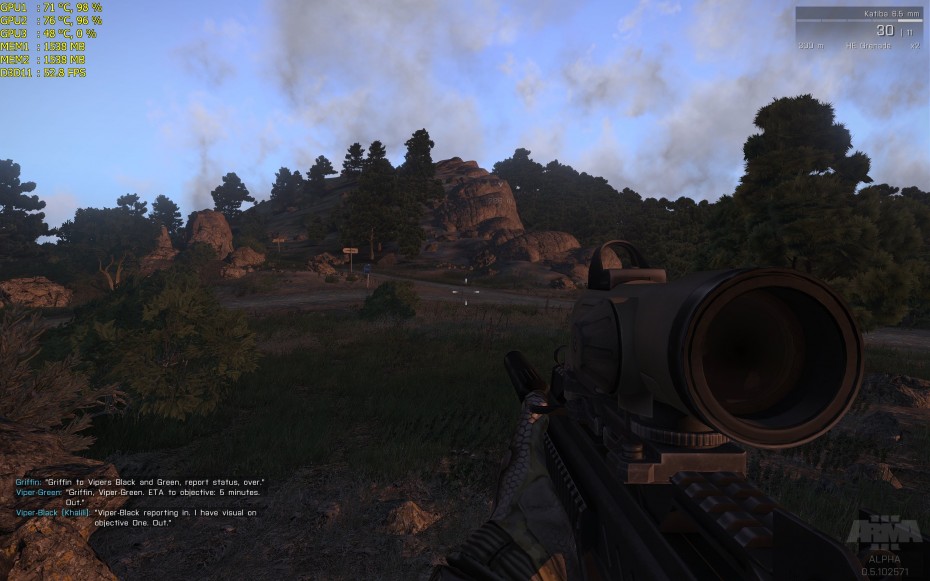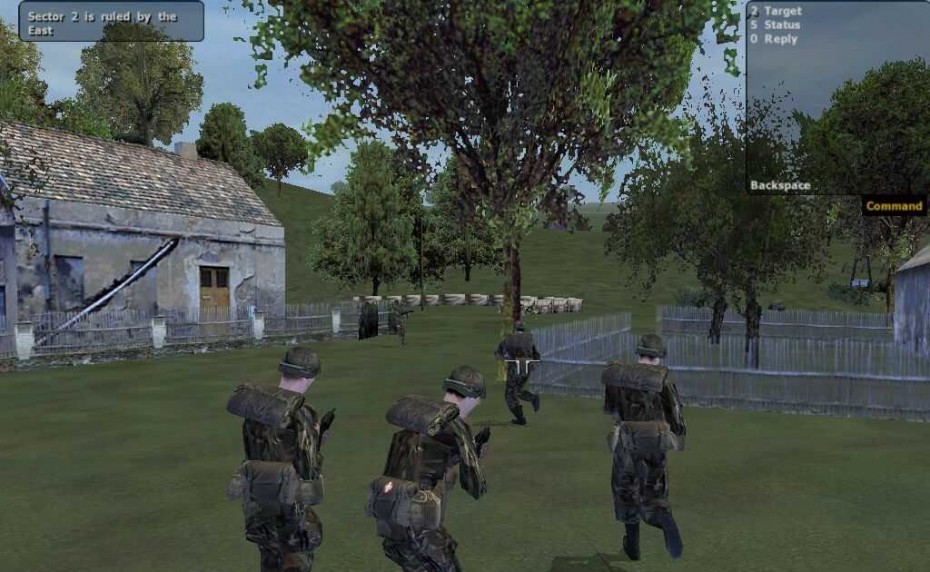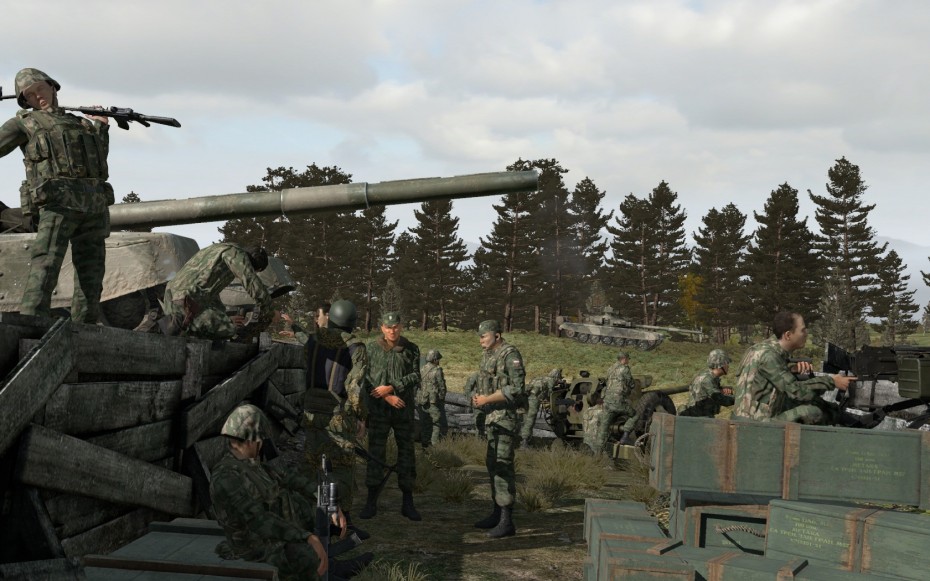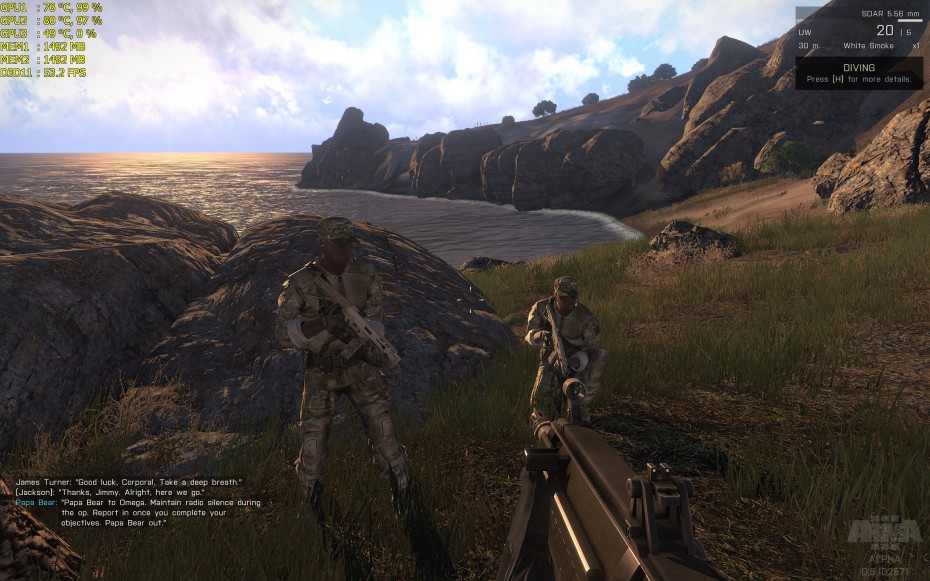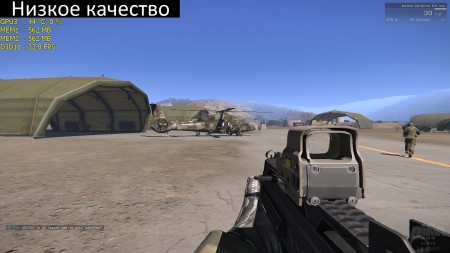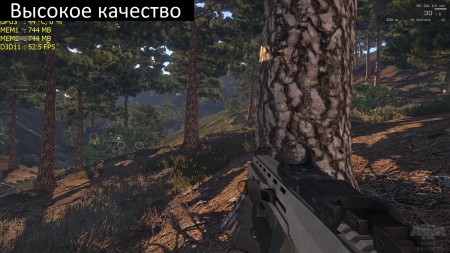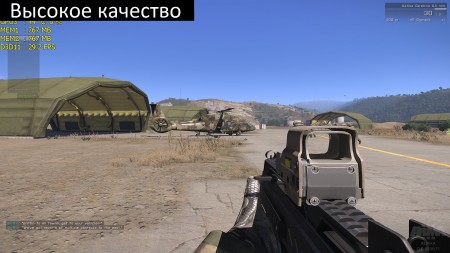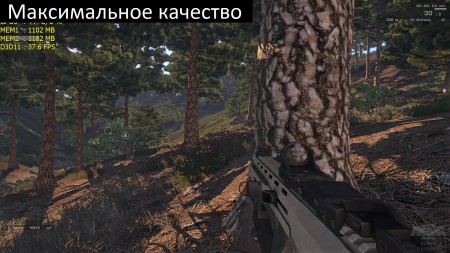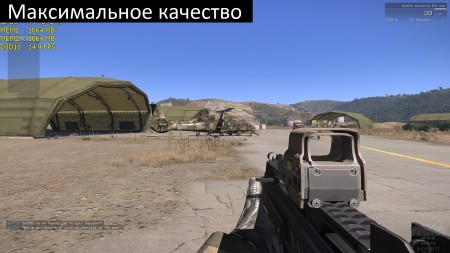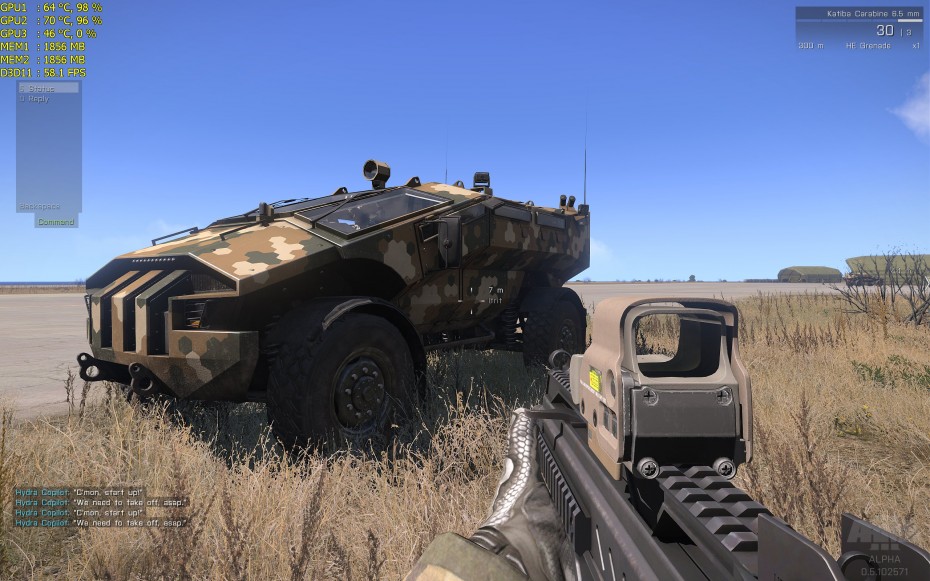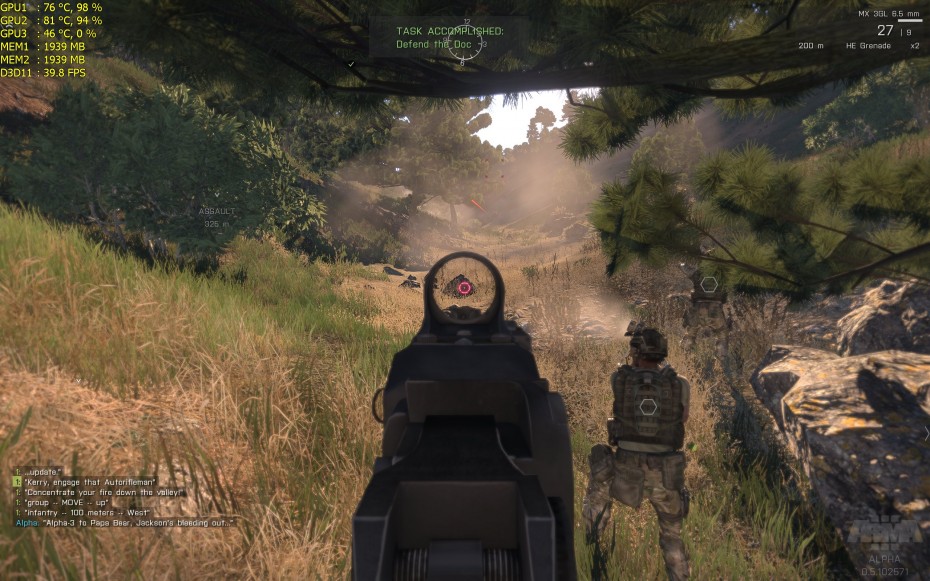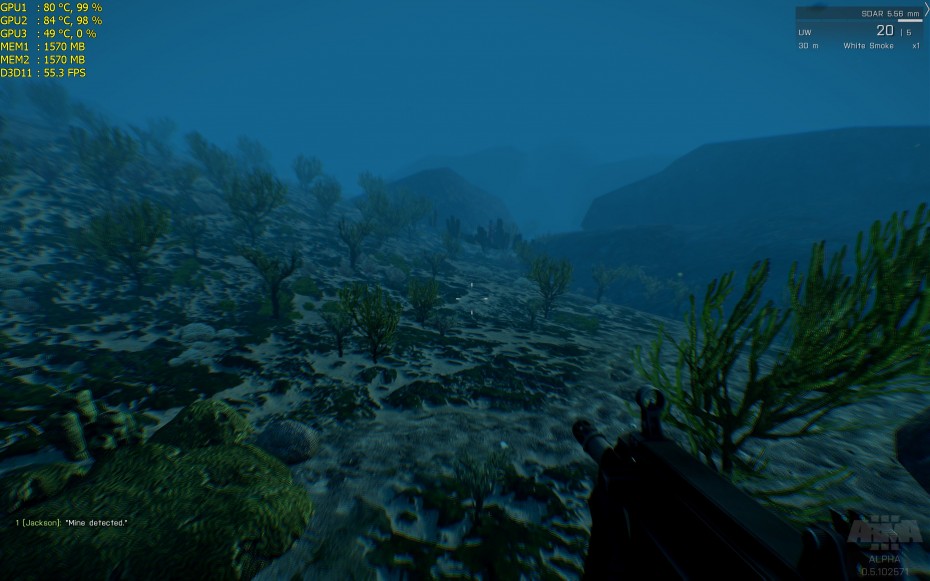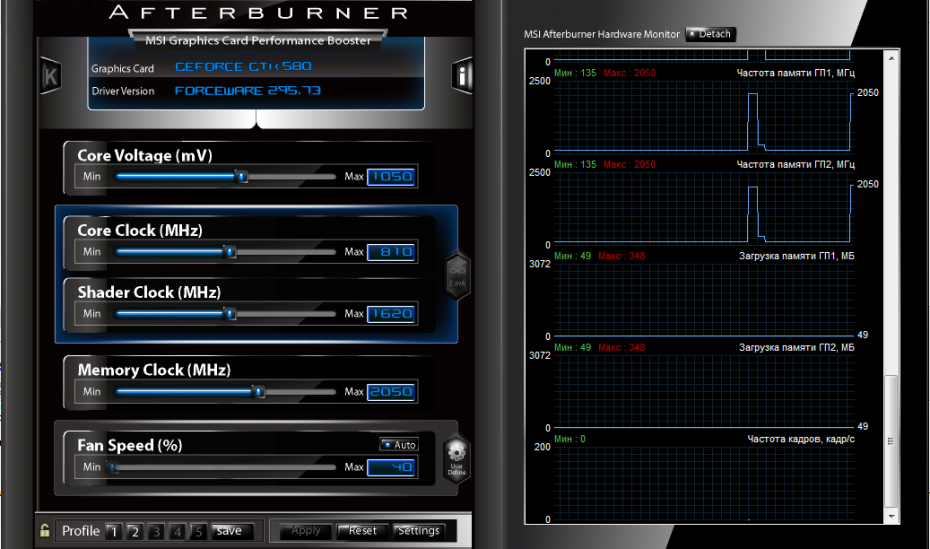ARMA III Alpha: PC Performance Benchmarks for Graphics Cards and Processors
| BASIC INFORMATION ON THE GAME |
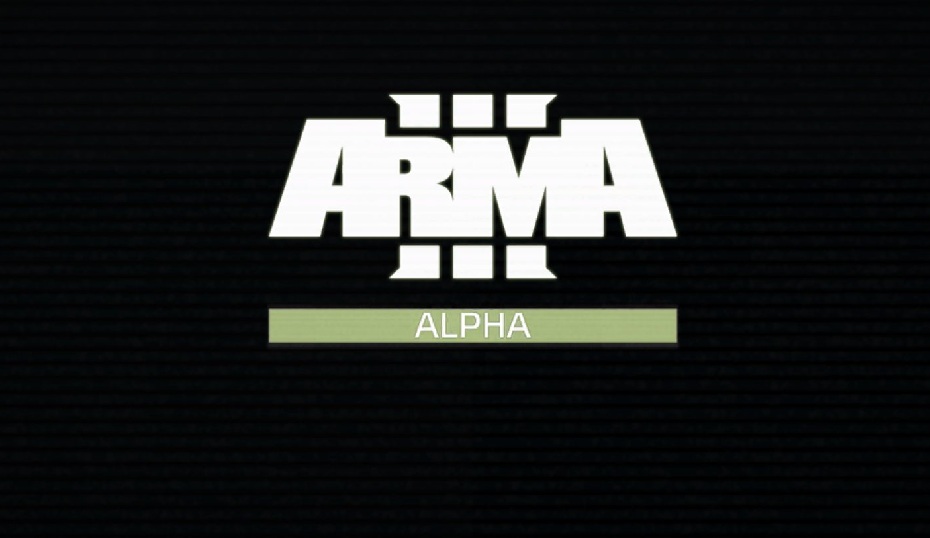
Alpha Release Date : March 5, 2013
Genre : Action/RTS
Developer : Bohemia Interactive
Publisher : Bohemia Interactive
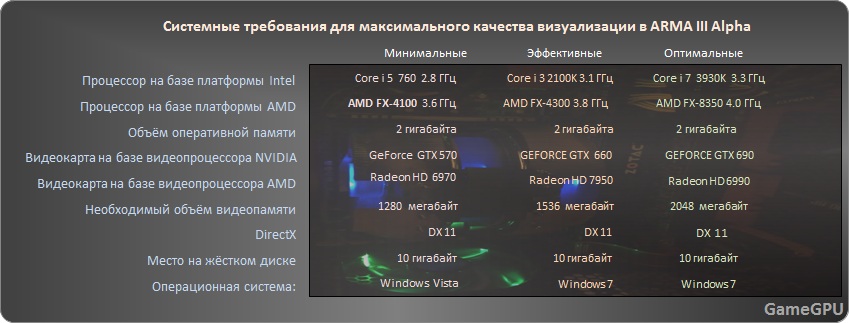
ArmA 3 is a PC game developed by Bohemia Interactive Studio. It is a continuation of ArmA 2. Officially announced on May 19, 2011. Classified as a combat simulator. The release of the alpha version took place on March 5, the beta version in the II quarter, and the full release in the III quarter of 2013.
The action of the game will again take place on the vastness of the island, this time recreated from the real island of Lemnos.
| THE GRAFICAL PART |
In this subsection of our review, the main graphical aspects of this game are revealed. Particular attention is paid to the version of the graphics engine used, the version of the API used, graphics settings and the quality of the development of the main visual aspects.
| Supported OS and graphics API |
ARMA III Alpha is supported by major Windows operating systems, which include Windows Vista, Windows 7 and Windows 8. Other operating systems are not currently supported by developers.
The priority and main graphics API for the ARMA III Alpha multiplayer game is DirectX 11. The game is distributed through the Steam digital game sale service.
| Game engine |
The ARMA III Alpha video game is based on Real Virtuality's proprietary engine. Real Virtuality is a game engine developed by the Czech company Bohemia Interactive Studio. The original name of the engine is "Poseidon". The engine is constantly being improved and is used in all Bohemia projects.
Real Virtuality version 1: The first version of the Real Virtuality engine was used in the PC-exclusive game Operation Flashpoint: Cold War Crisis, which was released in the summer of 2001. After that, it was used to create several add-ons for Operation Flashpoint, as well as in the army simulator Virtual BattleSpace 1 (VBS1). Rendering is done using DirectX 7. The graphics engine uses real-time shading and lighting, high-quality textures for the time, dynamic weather effects, and changing times of day. Another feature of the engine is the ability to create large levels, mostly open ones. The sound engine supports dynamic sound simulation, including sound velocity simulation. In addition, there was a built-in scripting language of its own, which contained approximately 350 commands.
Real Virtuality version 2 : Real Virtuality version 2 first appeared in November 2006 with the release of Armed Assault. This version of the engine was used in all add-ons for Armed Assault, as well as in VBS2. In the second version, the game engine began to support DirectX 9. Support for Shader Model 2, High Dynamic Range Rendering, and satellite textures was added to the graphics engine. About 400 new commands have been added to the scripting language. From this version, real-time resource swapping was introduced into Real Virtuality.
Real Virtuality version 3 : The third version of Real Virtuality was first used in ArmA 2, which was released in the summer of 2009. The engine has been optimized to work on multi-core processors. The graphics engine began to use third-generation shaders, bump mapping, parallax texture mapping, and hemispherical lighting. Game AI has been significantly improved: a system of gestures, suppressive fire, a dynamic communication system has been added.
Real Virtuality version 4 : The fourth version of the engine is announced for use in Arma 3 and contains many new features compared to the previous version. New features include support for Direct3D 11, the nVidia PhysX physics engine, and many other improvements, including a more advanced level editor
| Advanced game settings |
ARMA III Alpha has a huge amount of visual customization, very similar to ARMA II . We can flexibly manipulate both basic and advanced all graphic settings, exposing them to low, medium, high, very high and maximum quality levels.
 |
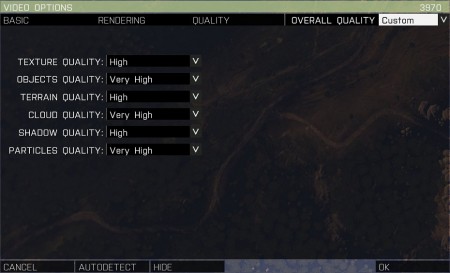 |
Below we have included screenshots of the game at various graphics settings, where our readers can see the difference between the minimum, medium, and maximum graphics quality settings.
| Low quality settings | ||
|
||
| Medium quality settings | ||
|
||
| High quality settings | ||
|
||
| Maximum quality settings | ||
|
As we can see, the picture difference between different graphics settings is quite significant.
| General visual design and game physics |
ARMA III Alpha is a pre-release product and it's too early to talk about the final quality of the product. From the very first acquaintance with the game, we can say for sure that at this stage ARMA III looks very good, especially considering that DirectX 11 features were added for greater realism and image quality.
Significant progress is noticeable relative to its predecessor in the face of ARMA II. The colors have become more realistic, the game world is noticeably detailed, especially the possibilities of tessellation pleased us - when approaching the objects of the world around us, we see amazing detail that does not come at the expense of performance.
The game also claims support for nVidia PhysX, but at this stage we have not seen the presence of this option in the game. Most likely, we will be able to see its capabilities in beta testing, or when the full version of the game is released. Controls in the game are typical of this genre, so experienced users should not have any problems with it.
Next, we will go directly to the gaming tests and determine what impact this game has on modern computer hardware.
| TEST PART |
|
Test configuration |
|
|
test stands |
Benchmark #1 based on the Intel Socket 2 011 Test stand #2 based on the Intel Socket 1155 platform Test stand #3 based on the Intel Socket 1366 platform Testbed #4 based on the Intel Socket 115 6 Test Bench #5 Based on AMD Soket AM 3 Test Bench #6 Based on AMD Socket AM3 Platform Test Bench #7 Based on AMD Soket AM 2 Testbed #8 based on the Intel Socket 1155 platform |
|
multimedia equipment |
3D monitor LG W2363D Monitor LG E2750 Dell U3010 monitor product provided by AMD 3D Vision Kit product provided by Nvidia |
|
Software configuration |
|
|
operating system |
Microsoft Windows 7 Ultimate Edition x64 SP1 |
|
Graphics driver |
Nvidia GeForce/ION Driver Release 314.14 AMD Catalyst 13.2 beta 6 |
|
Monitoring program |
MSI Afterburner 2.3.1 |
| GPU test |
All video cards were tested at maximum graphics quality by MSI Afterburner . The purpose of the test is to determine how video cards from different manufacturers behave under the same conditions. The average and minimum FPS were taken as the performance indicator. Below is a video of the test segment:
Our video cards were tested at 1920x1080 and 2560x1600 resolutions at high, very high and maximum graphics quality settings allowed by ARMA III Alpha. Multi-chip configurations from NVIDIA and AMD have shown a good performance boost, which indicates perfect driver preparation, even though the release is still very far away.

Testing at high quality settings 1920x1080
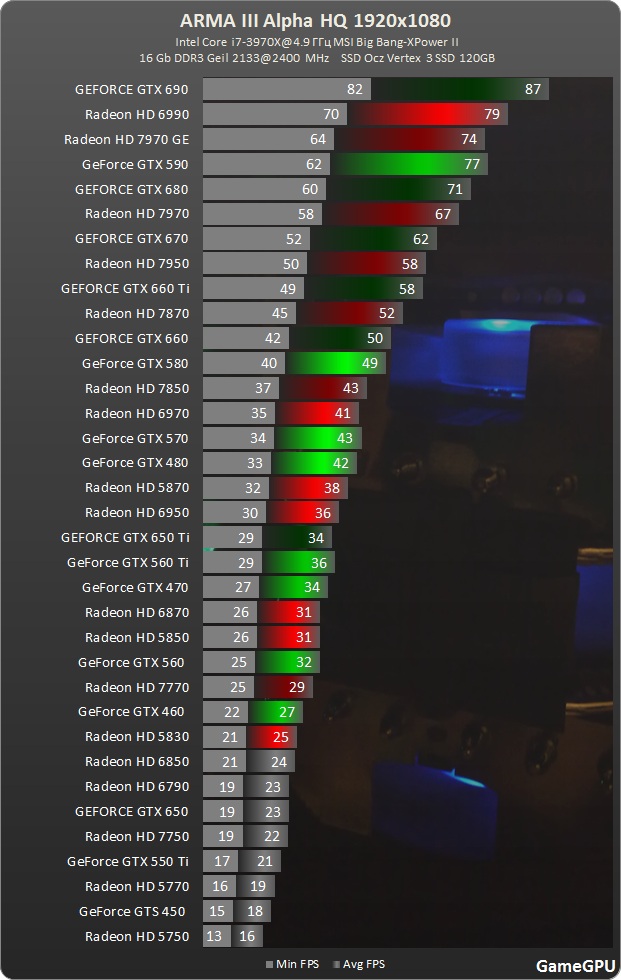
At a resolution of 1920x1080 at high settings, video cards of the Radeon HD 5830 or GeForce GTX 460 level showed an acceptable FPS . The optimal video cards will be solutions Radeon HD 6870 or GeForce GTX 560 and higher.
Testing at high quality settings 2560x1600
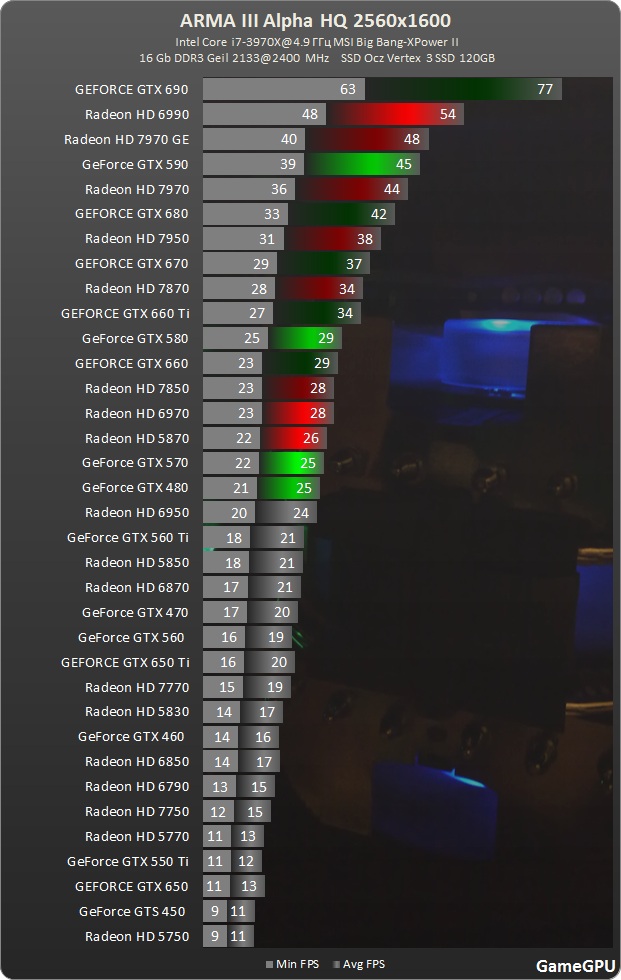
At a resolution of 2560x1600 at high settings, video cards of the Radeon HD 5870 or GeForce GTX 480 level showed an acceptable FPS . The optimal video cards will be solutions Radeon HD 7870 or GeForce GTX 580 and higher.

Testing at very high quality settings 1920x1080

At a resolution of 1920x1080 at very high settings, video cards of the Radeon HD 5870 or GeForce GTX 480 level showed an acceptable FPS. Radeon HD 7850 or GeForce GTX 580 and higher solutions will be optimal video cards.
Testing at very high quality settings 2560x1600

At a resolution of 2560x1600 at very high settings, video cards of the Radeon HD 7870 or GEFORCE GTX 660 Ti level showed an acceptable FPS . The optimal video cards will be solutions Radeon HD 7970 or GEFORCE GTX 680 and higher.

Testing at maximum quality settings 1920x1080
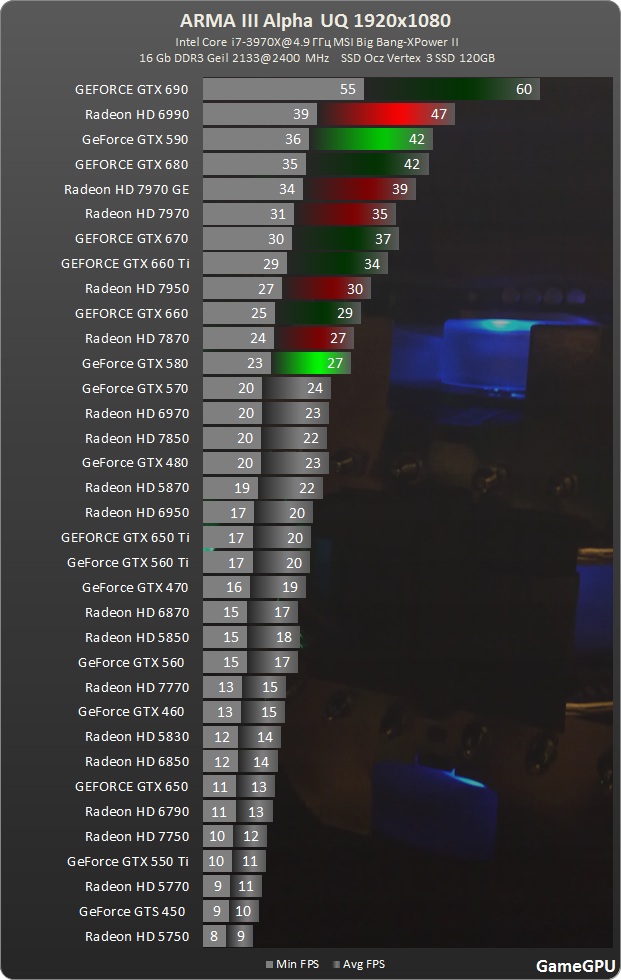
At a resolution of 1920x1080 at maximum settings, video cards of the Radeon HD 7870 or GeForce GTX 580 level showed an acceptable FPS. Radeon HD 7950 or GEFORCE GTX 660 and higher solutions will be optimal video cards .
Testing at maximum quality settings 2560x1600
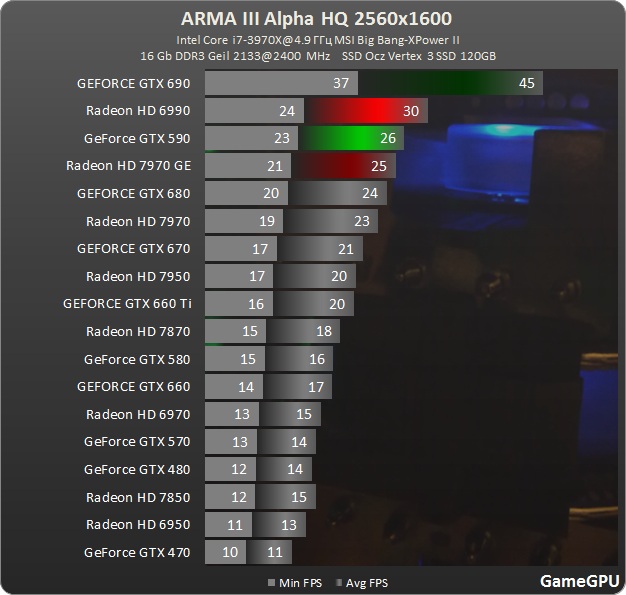
At a resolution of 2560x1600 at maximum settings, video cards of the Radeon HD 7970GE or GeForce GTX 590 level showed an acceptable FPS. Radeon HD 6990 or GEFORCE GTX 690 and higher solutions will be optimal video cards.
| VRAM test |
Testing of the video memory consumed by the game was carried out by the MSI Afterburner program. The results on top video cards from AMD and NVIDIA were taken as an indicator at resolutions of 1920x1080 and 2560x1600 with various anti-aliasing settings.
Testing at maximum memory GPU quality settings

The recommended amount of video memory for this game is about 1 GB for basic graphics quality settings. For ultra resolutions and maximum settings, you will need about 1.5-2 gigabytes of video memory.
| CPU test |

We tested processor dependence on 19 models of basic configurations that are relevant today. The test was carried out in those places where the value of the video card for the game is minimal and its load was less than 99%, this time at a resolution of 1920x1080 with high and maximum graphics quality settings. Below is a video of the test segment:
Testing at high quality settings 1920x1080
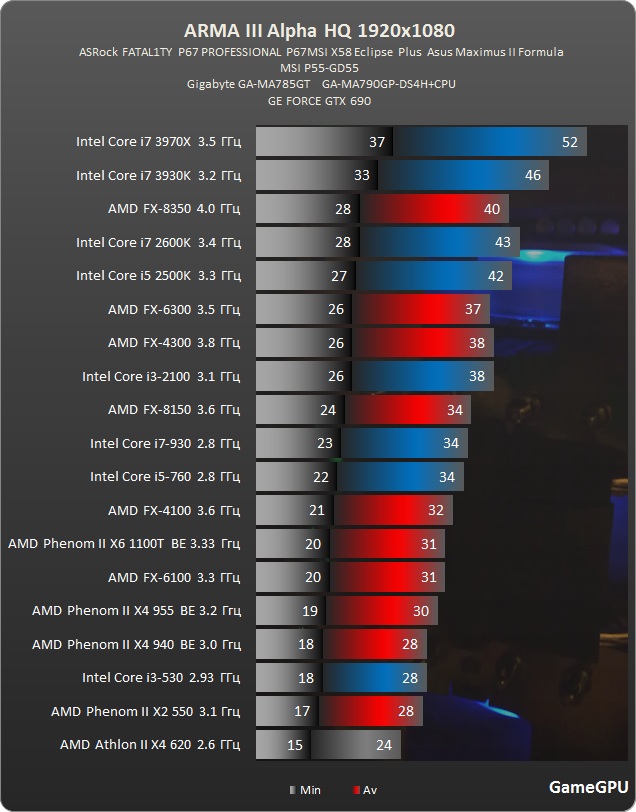
Testing at maximum quality settings 1920x1080

ARMA III Alpha has a very noticeable impact on the performance of modern processors. With an increase in the level of graphics, both the drawing distance and the number of displayed objects increase. At maximum quality settings, no modern processor can provide optimal performance in some places.
Loading of processor cores at maximum quality settings 1920x1080 Intel %
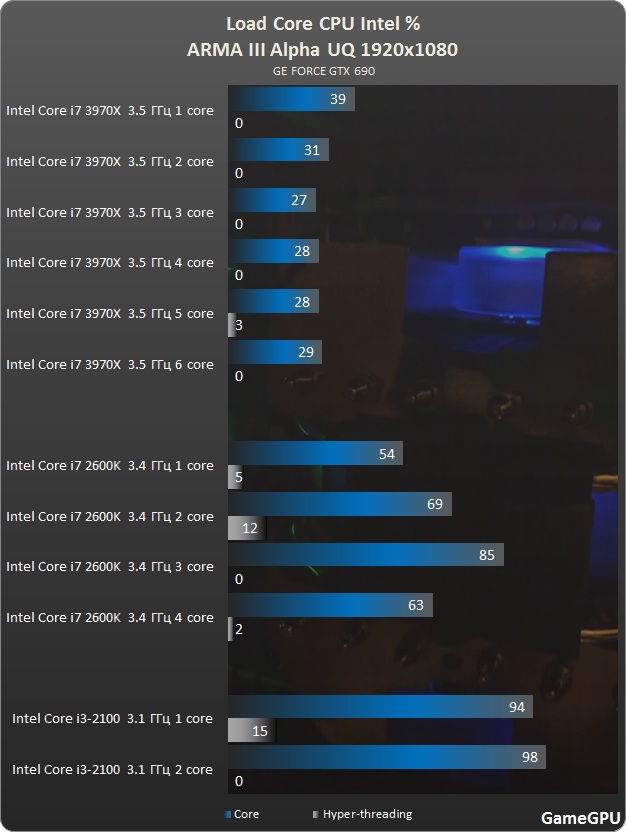
Loading of processor cores at maximum quality settings 1920x1080 AMD %
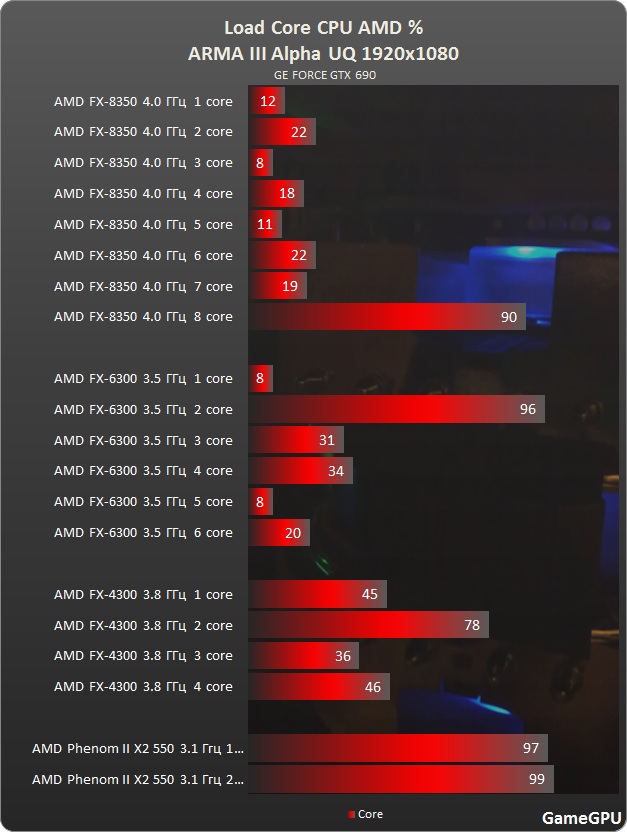
The game can fully load only two processor cores. With an increase in the number of cores, the load is distributed between them with virtually no effect on performance itself. If the optimization is not fixed before the release, then this will cast doubt on the acquisition of ARMA III.
| RAM test |
Testing of the RAM consumed by the game was carried out by monitoring directly through the Windows Task Manager. The test was conducted on the base configuration Core i 7 3930K@4.8 GHz with 16GB DDR3 2400 MGz pre-installed memory.
Testing at various quality settings

As we can see, with various basic quality settings, the amount of RAM consumed in ARMA III Alpha is almost at the same level and amounts to 600 megabytes. Thus, for a comfortable game, you must have at least 2 GB of RAM installed in your PC.




